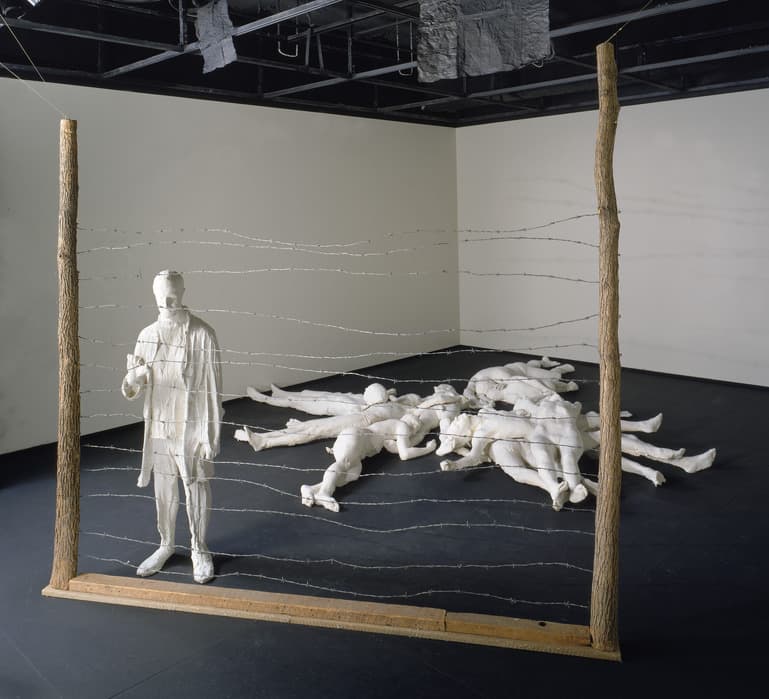George Segal, A Retrospective: Sculptures, Paintings, Drawings
The retrospective features a broad range of Segal’s artistic output, including pre-Pop paintings and pastels, and post-Pop bas-reliefs, sculptures,works on paper, and maquettes for public commissions.
For nearly forty years, George Segal has been making evocative sculptures of figures, usually set in realistic everyday settings. Although he is most famous for such figurative tableaux, George Segal, A Retrospective: Sculptures, Paintings, Drawings features a broad range of his artistic output, including pre-Pop paintings and pastels, and post-Pop bas-reliefs, sculptures,works on paper, and maquettes for public commissions. During the 1940s and 1950s, Segal began his artistic career as a painter. Inspired by artists ranging from Paul Cezanne to Willem de Kooning, he made pastels and oil paintings of figures and still lifes subjects that defied the dominance of abstraction in American art at the time. Segal was one of a new generation of artists, including Jim Dine, Allan Kaprow, Roy Lichtenstein, Claes Oldenburg, Andy Warhol,and Tom Wesselmann, who chose to use recognizable imagery and thus convey the continuity of art and life. Although Segal has often been associated with American Pop Art, his individualistic approach quickly distinguished him from the other artists with whom he exhibited. Far removed from the wit and sophisticated detachment of their art, Segal confronts the human condition with a strongly felt empathy.
In 1958, Segal began making sculptures of people, using chicken wire, burlap, and plaster, as a complementary activity to his paintings. In 1961, with a new type of medical bandage designed to set fractures, he began casting human figures directly from live models. The marks from the bandages are still visible, and the surface–whether white or colored–is monochrome. Segal then marries the resulting figurative forms with objects and furniture evocative of the most banal urban decor, such as the counter of a diner or a gas station, and ordinary human activities like bathing, dressing, or simply sitting or lying down. The ready-made accessories used by the artist draw the viewer’s attention to human fragility and solitude, which remain the real subjects of his art.

Detail of George Segal (American, 1924 – 2000), The Holocaust, 1982, plaster, wood, and wire, dimensions variable. Photo by John ParnellThis image may not be reproduced without the expressed written consent of The Jewish Museum, New York.
